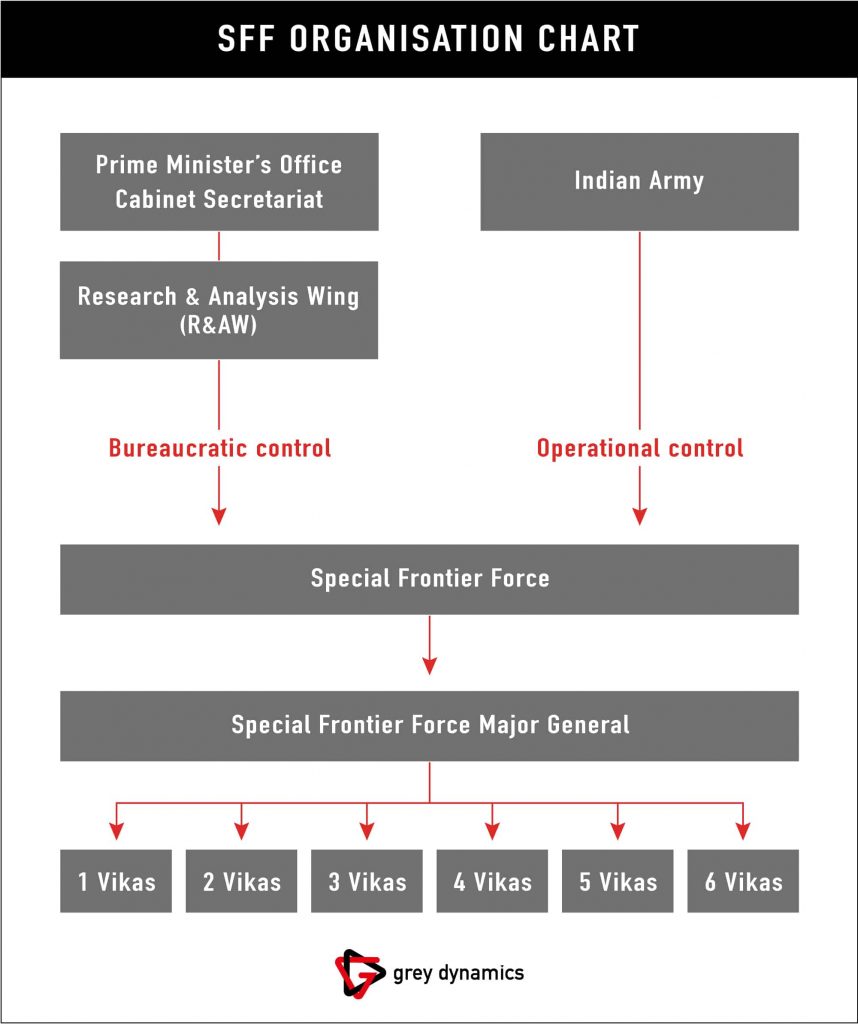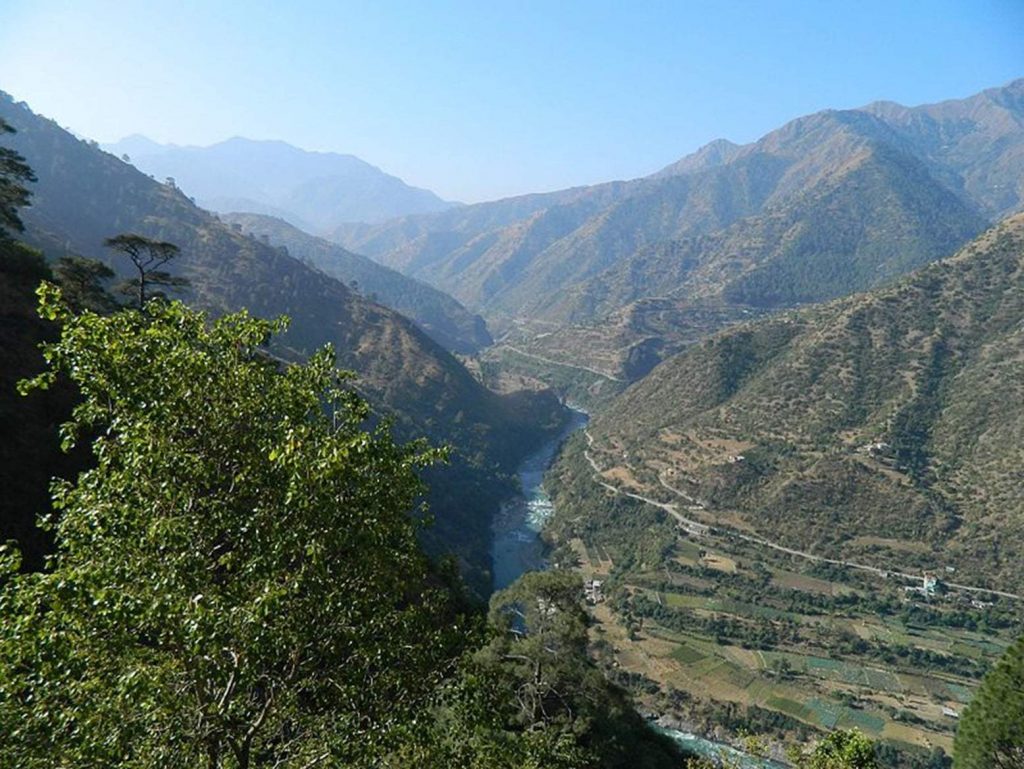Special Border Force: Tibetan elite mountain warfare unit

A highly specialized and secretive unit, the Special Frontier Force is a paramilitary unit of the Indian Army. Composed mainly of Tibetan refugees, the unit operates along the Tibetan border to increase India's strategic security against China. The Special Frontier Force is unique in that it was originally funded and trained by the CIA in the 1960s.
Background
The year is 1962; tensions between India and China are increasing day by day due to the disputed Himalayan border. Attempts to resolve these disputes have repeatedly failed, with negotiations between the two countries proving unsuccessful.
As relations deteriorate further and both countries step up military patrols along the border, scuffles regularly occur. War finally broke out between China and India in October 1962.

Largely due to a devastating series of battle defeats during the Sino-Indian War, Indian military forces recognize the need for more specialized units in the border areas. As a result, the Special Frontier Force, also known as SFF or "Establishment 22", was formed.
This article will focus on the formation and initial training of the SSF, up to the early 1970s, when CIA forces withdrew from SFF-led operations.
Chronology
- Late 1950s - Indian Army Chief General Thimayya proposes a paramilitary group to India of Tibetan refugees to counter the growing threat from China. These are declined by the Indian Prime Minister, Jawaharal Nehru.
- October 20, 1962 – Beginning of the Sino-Indian war.
- 14 November 1962 – The Special Frontier Force is finally formed at the request of Jawaharal Nehru .
- 21 November 1962 – The Sino-Indian war ends with Chinese victory and a ceasefire.
- 1962 - 1964 - The SFF continues to train, mainly in jungle and mountain warfare, led by the CIA and the Indian IB.
- 1964 - SFF begins air training.
- 1968 - SFF becomes fully air war qualified in the Indian Army. It is designated as a specialized unit for mountain and jungle warfare. Forces continue to be trained in air warfare and naval operations.
- 1971 - SFF involved in combat in the Indo-Pakistani War.
- 1971 - The US CIA quits the SFF training program, withdrawing troops and funds from the region, due to deteriorating political relations between the US and India.
Training
The idea of having a unit specializing in rural warfare was initially raised in the late 1950s by the then head of the Indian Army, the General KS Thimayya . However, these calls were rejected by political leaders at the time. Calls for such a group of specialists were renewed during the Sino-Indian War
A formal agreement has been reached between Chushi Gangdruk (guerrilla forces against China working in Tibet), R&AW (Research and Analysis Wing, India's main foreign intelligence agency) and the CIA. All three parties had a vested interest in neutralizing Chinese threats on the Sino-Indian border:
- Chushi Gangdruk - CG was a guerrilla organization in Tibet, formed under the political motivation of Tibetan nationalism.
- R&AW - India had persistent security issues around China and needed to consolidate its legitimacy in its border disputes. At the time of the formation of the SFF, India was still officially at war with China.
- The CIA - The United States was very concerned about the growing communist threat from China during the Cold War, and as such the support of Indian special forces would help this strategic objective.
Therefore, the agreement was made to form a paramilitary group, under instruction from the Nehru administration, aimed primarily at specializing in rural combat and undertaking reconnaissance missions along the Tibetan border.
The SFF was established in 1962 in the city of Chakrata, in the state of Uttarkhand, in northern India. Due to its northern location and proximity to the border with Tibet, the region was home to a large population of Tibetan refugees. As a result, the initial SFF consisted of 5,000–6,000 Tibetan refugees living in Chakrata, many of whom had already been fighting for a long time under Chushi Gangdruk. At its height, the SFF would have had up to 12,000 men.

Tactics, Techniques and Procedures (TTP)
Due to border conflicts and the threat from the north, India needed specialized ranged training, and as such the SFF were stationed in border areas and trained to be highly specialized in jungle warfare. and mountain. Officially, it operated independently of the Indian Army, but as a paramilitary organization, the leadership of the SFF fell under the leadership of R&AW. Within the SFF, there are 6 batalltions (“Vikas”).

Initially, the armament of the SFF was supplied almost exclusively by the United States , and was mainly composed of M-1, M-2 and M-3 machine guns. Due to several strategic successes achieved by the SFF in the early 1960s, additional supplies were provided by the United States and the R&AW, including air vehicles to enable the launch of the air training program.
Besides combat operations, Establishment 22 was responsible for spy missions across the Tibetan border, primarily aimed at monitoring Chinese nuclear and missile tests.
CIA withdrawal
The CIA withdrew troops from SFF training in 1971. Political relations between the United States and India deteriorated rapidly at the start of the Nixon administration. This was due to Nixon's open support for Pakistan during the Indo-Pakistani War, relations became strained, and the CIA was removed from SFF training and funding programs.
Limited reports suggest that the KGB then exploited the power vacuum within the SFF, and the Soviet Union sent KGB agents to further train SFF forces .
A modern SFF
The SFF is cited as having played a key role in many multiple Indian tactical operations since its conception , such as the advances during the Bangladesh War of 1971 and Operation Bluestar in 1984.

The SFF remains a highly specialized paramilitary unit in India today, with the recruitment exclusively of officers from other elite military units. Modern agents train in air, mountain, jungle, and water warfare. While operating technically independently, SFF management reports to the R&AW Director for progress and training. It remains the only ethnic Tibetan unit in the Indian Army.
Summary
The Special Frontier Force is a highly specialized paramilitary unit of the Indian Army. The unit was formed as a multinational deal to counter the growing Chinese communist threat. Although the political landscape has changed dramatically since its inception, the SFF has continually proven instrumental in India's strategic and intelligence successes to date.
0 comments